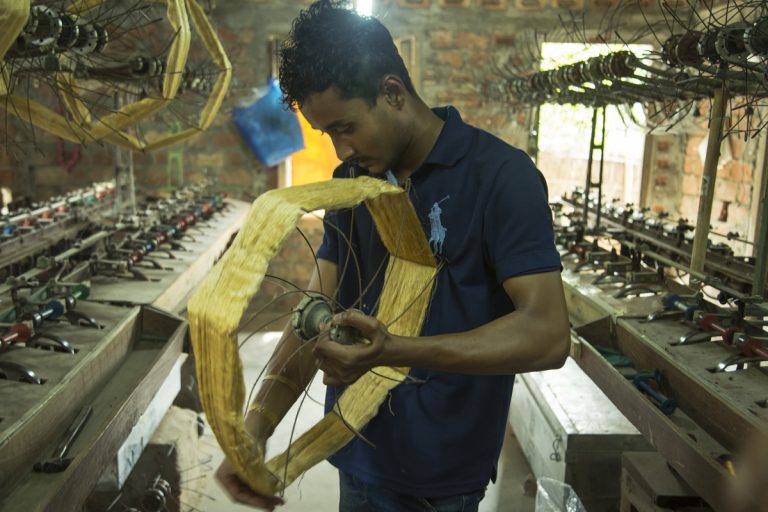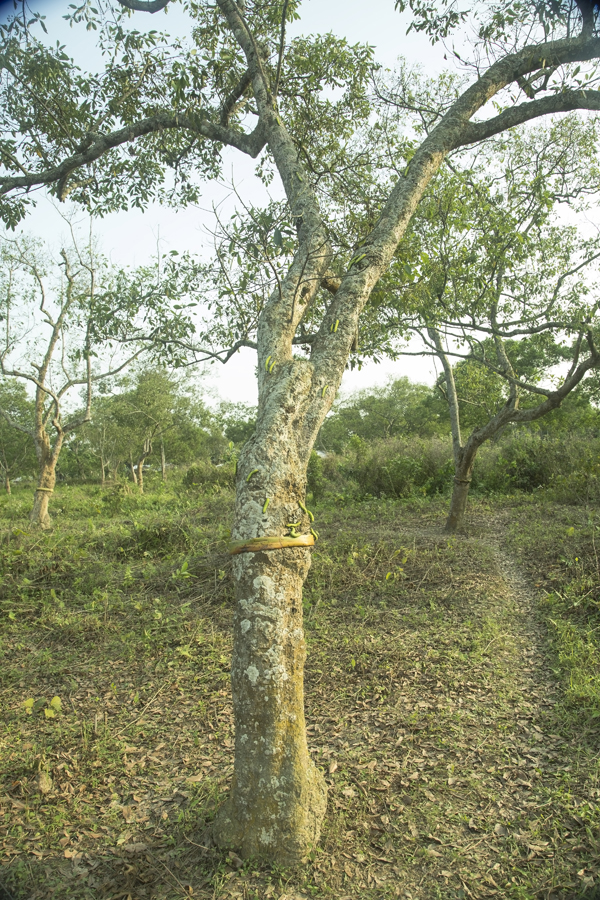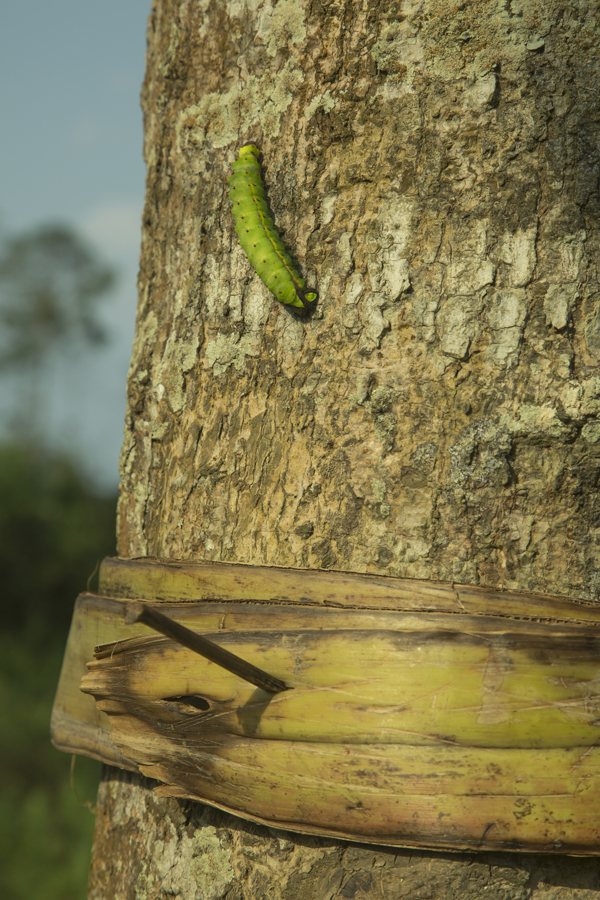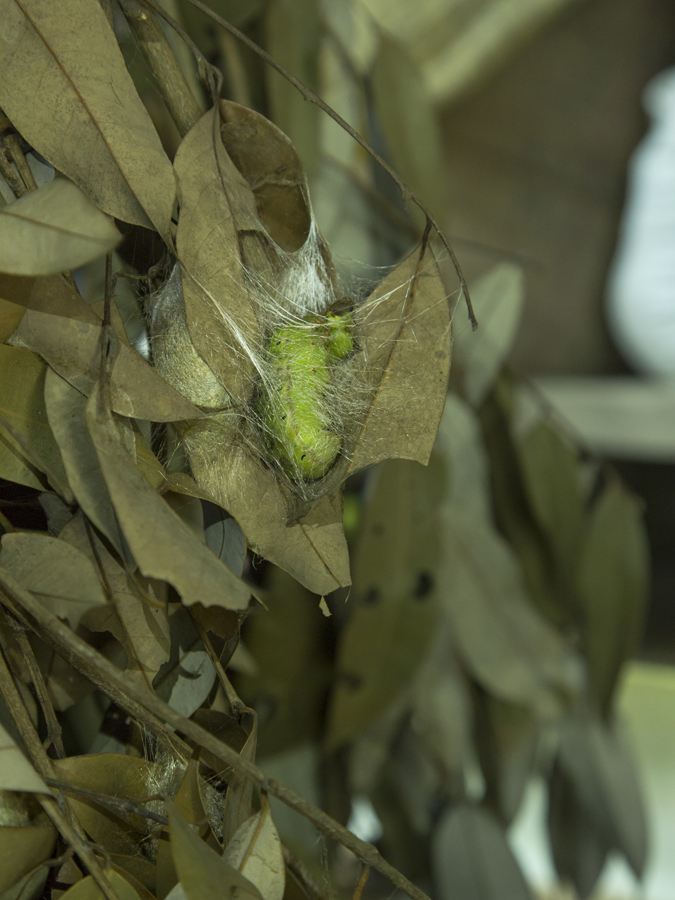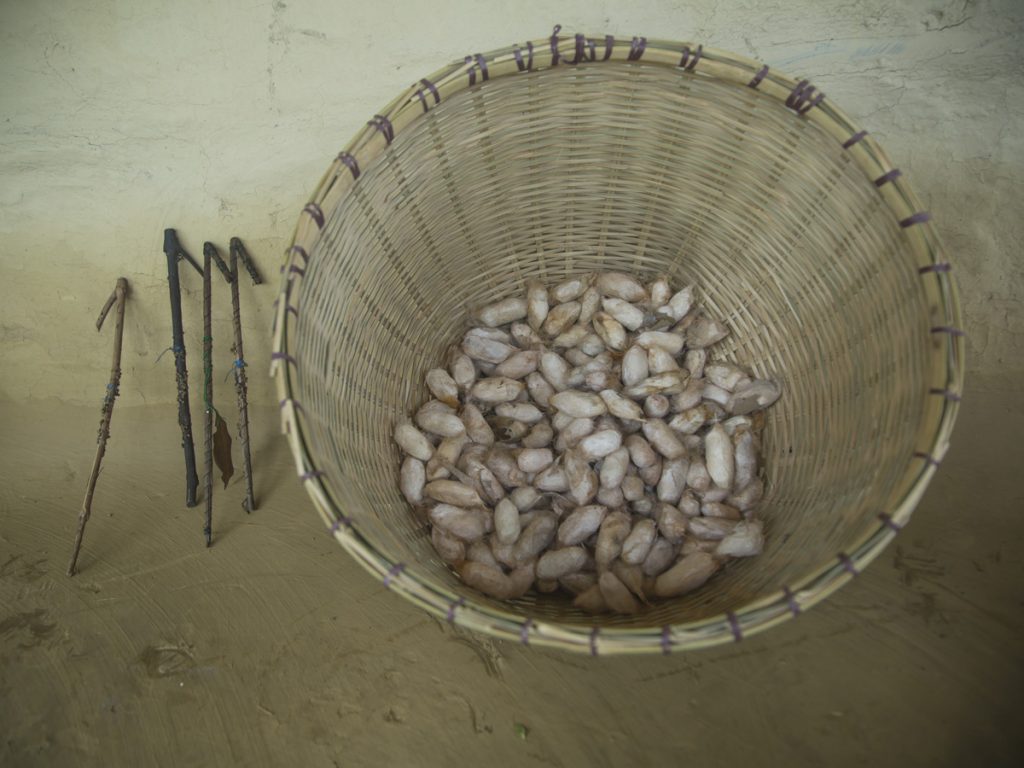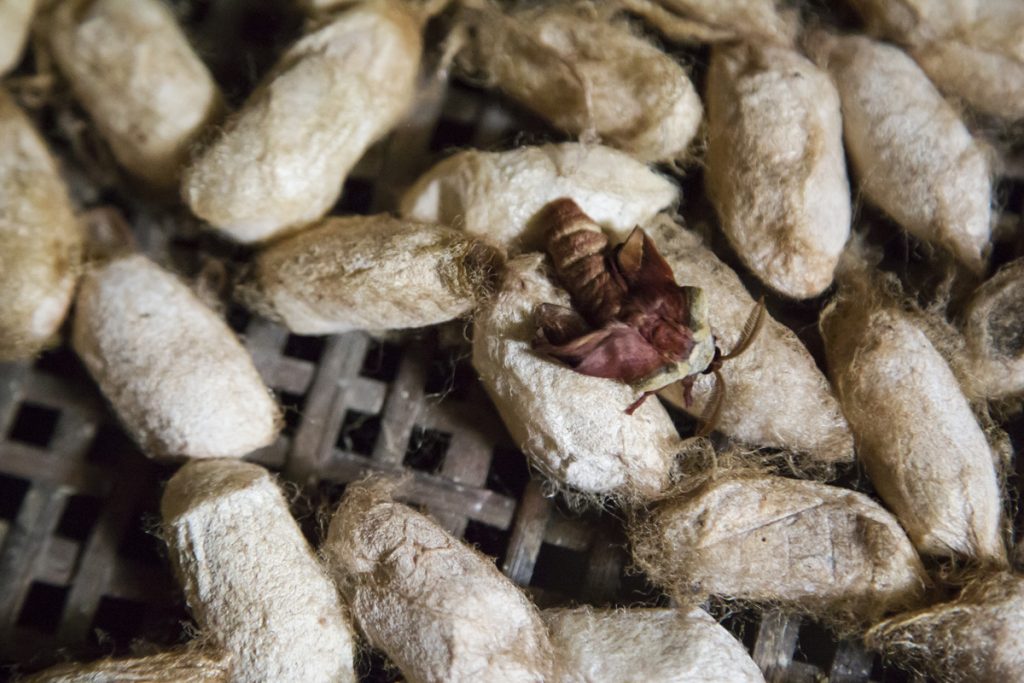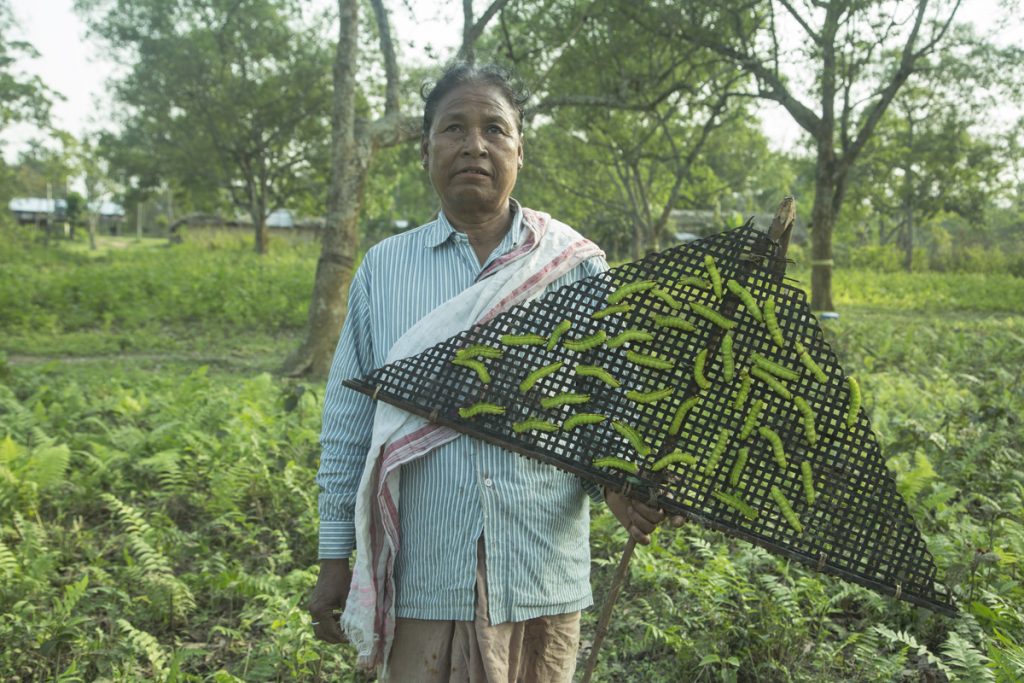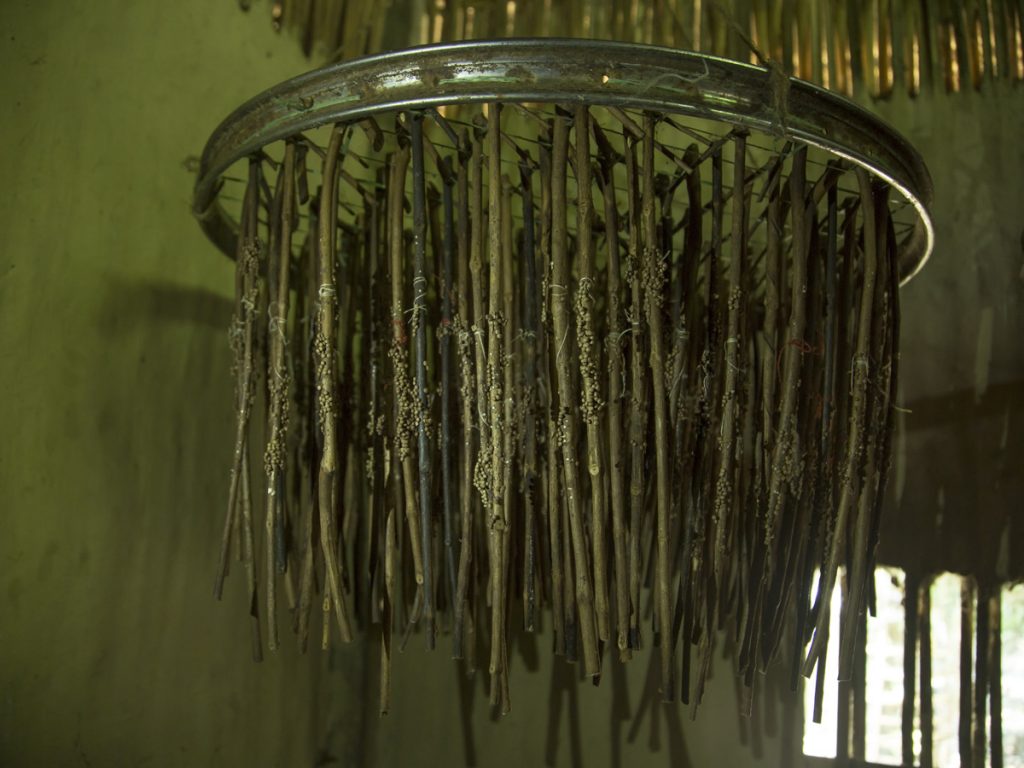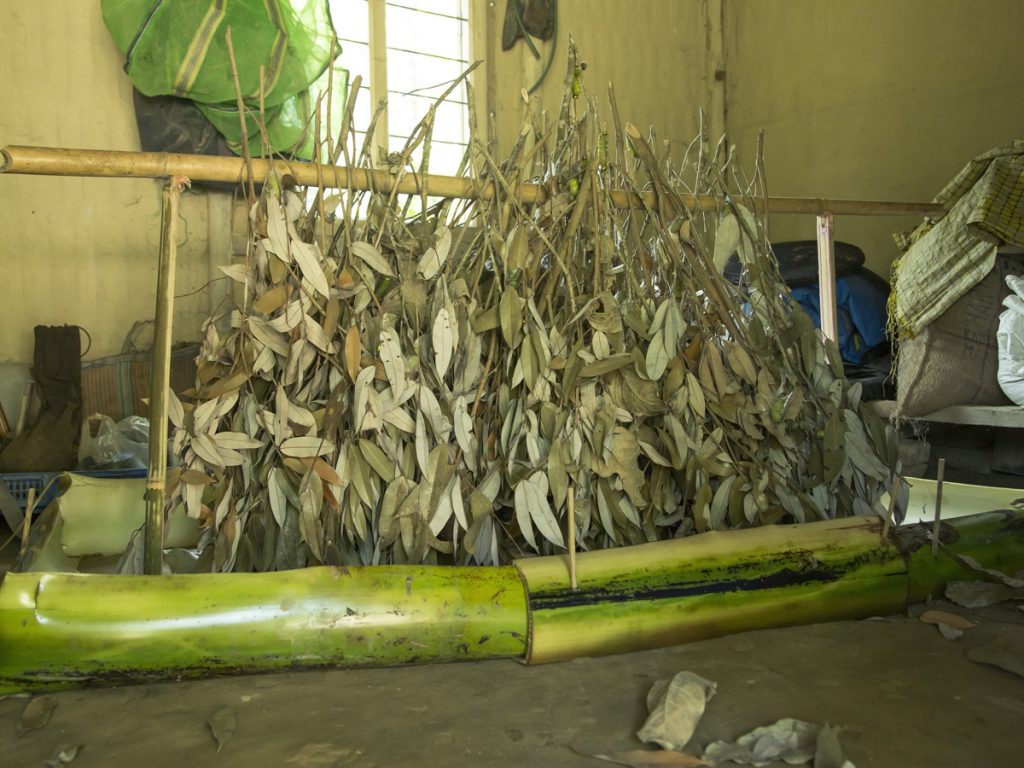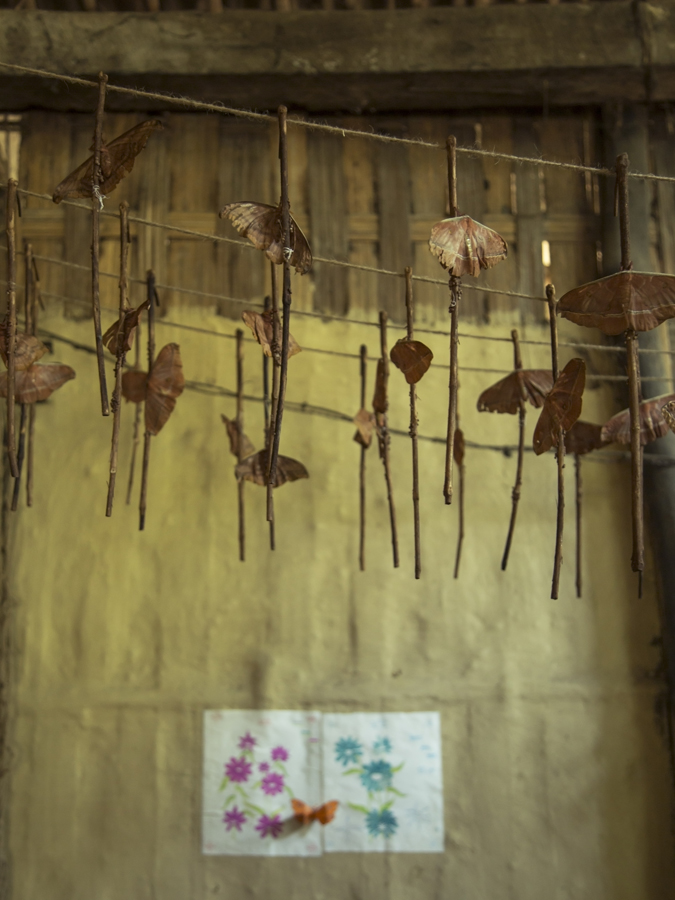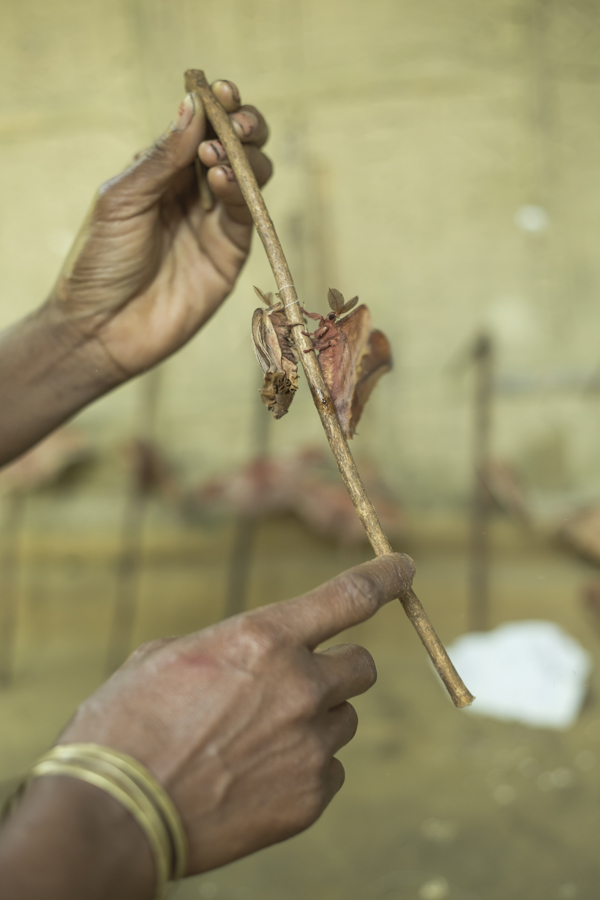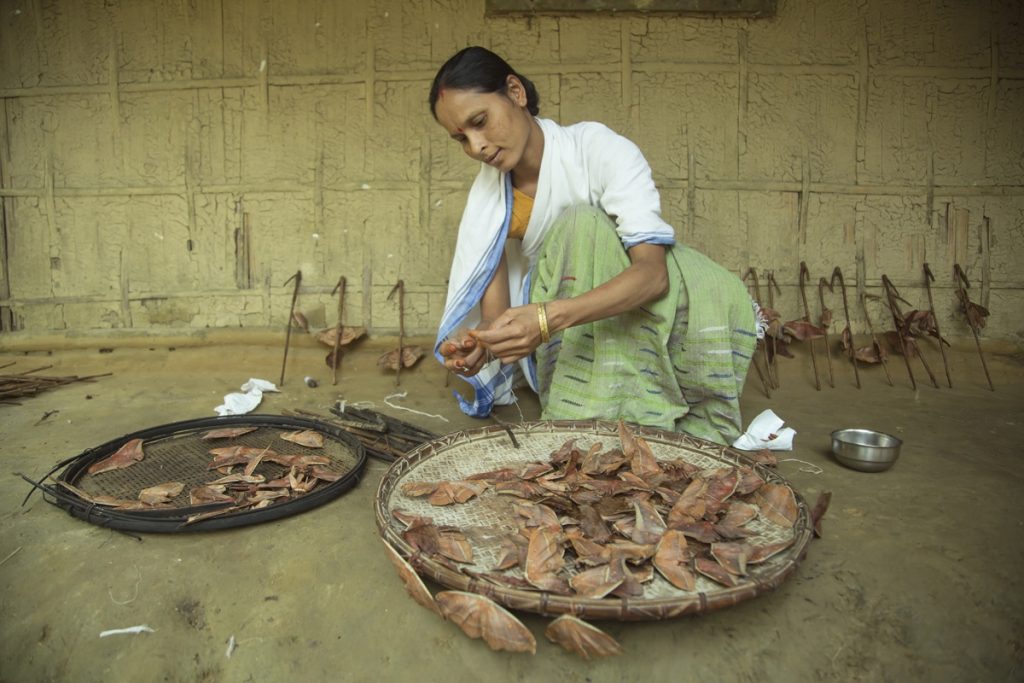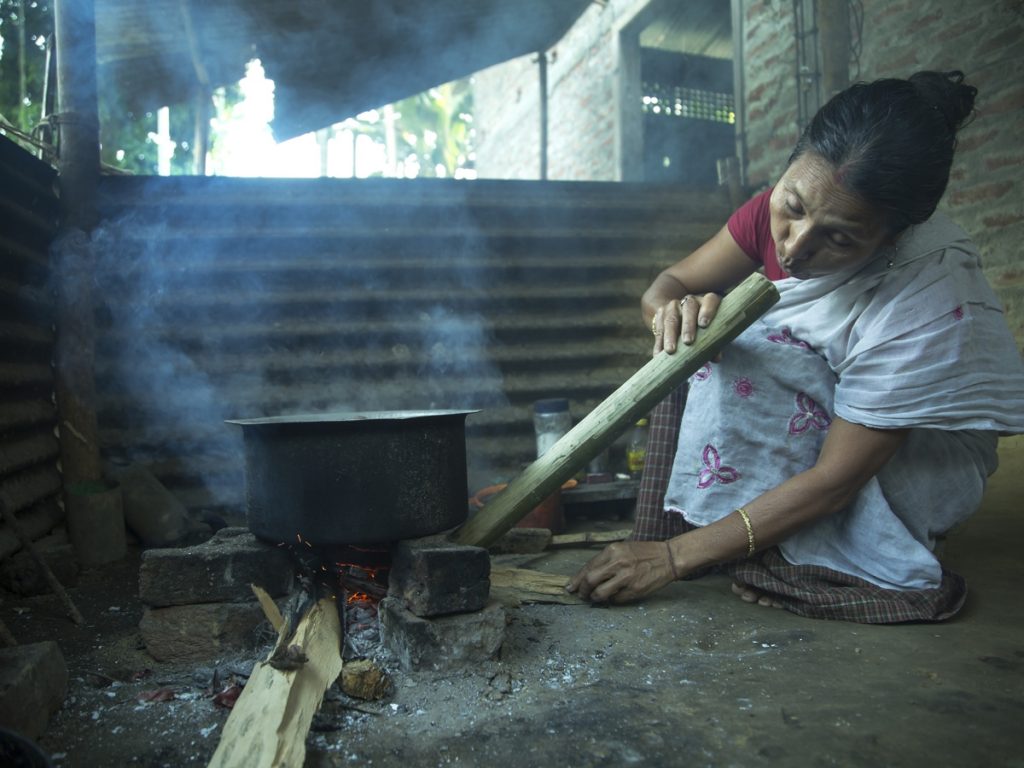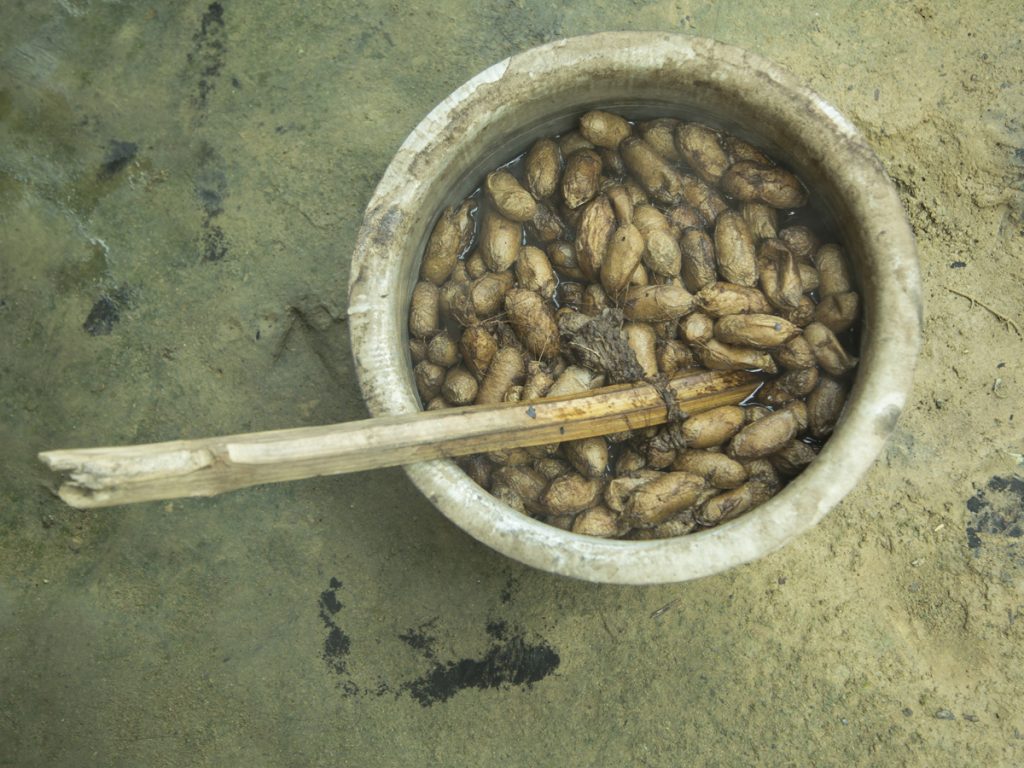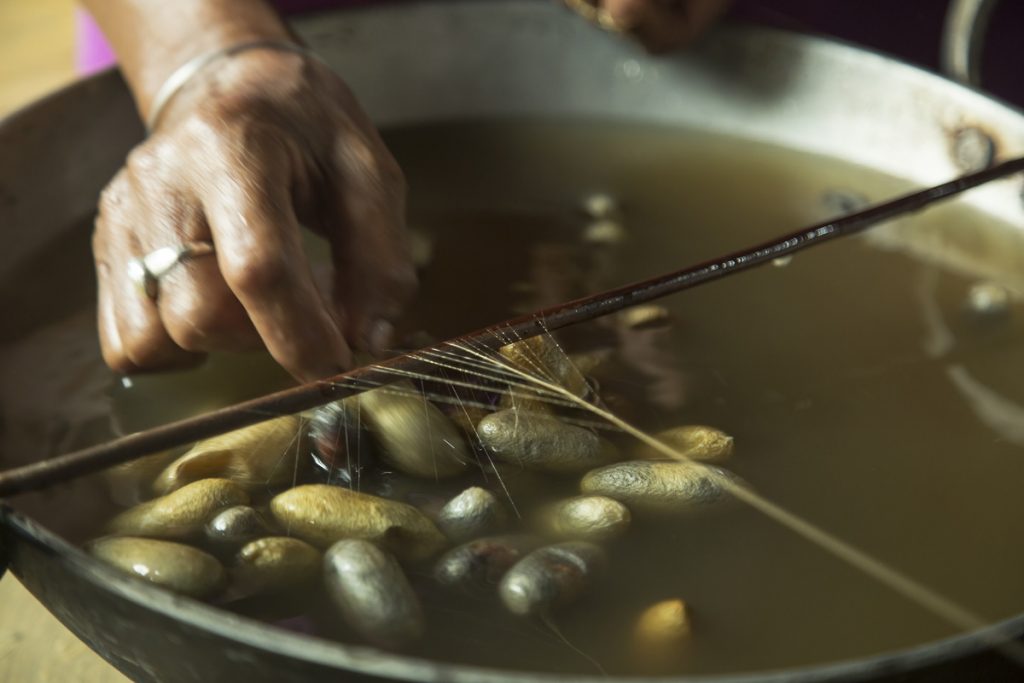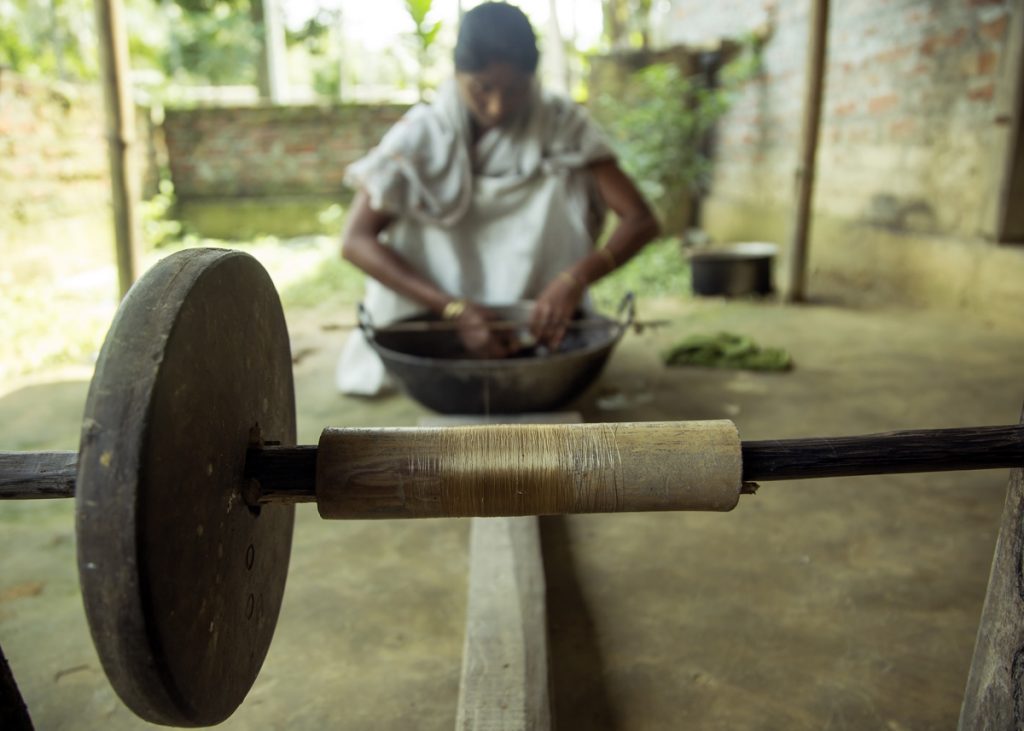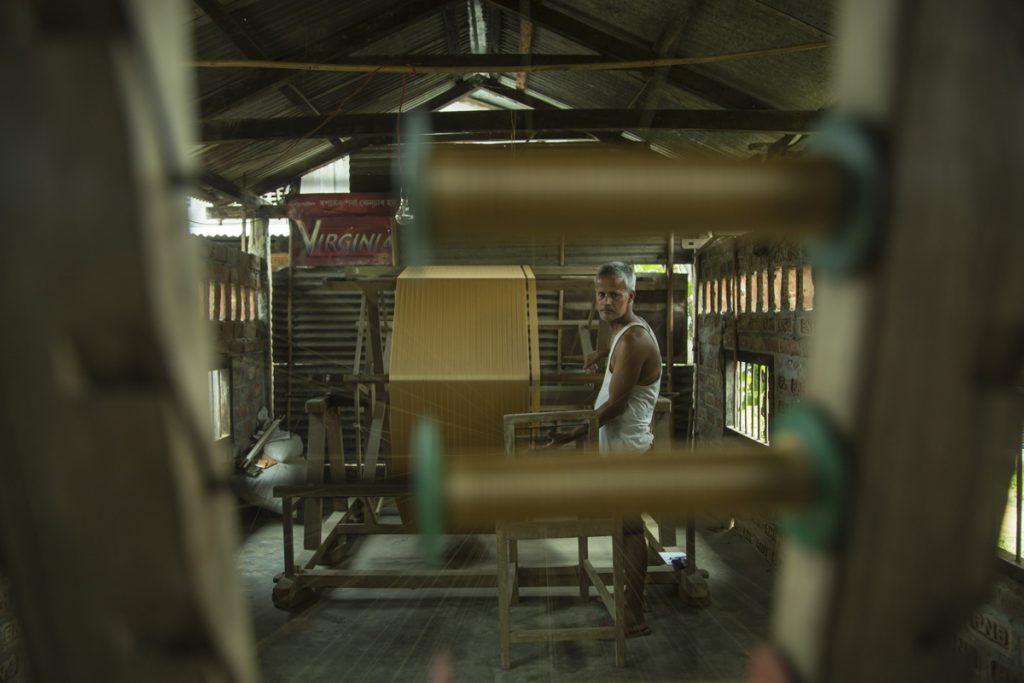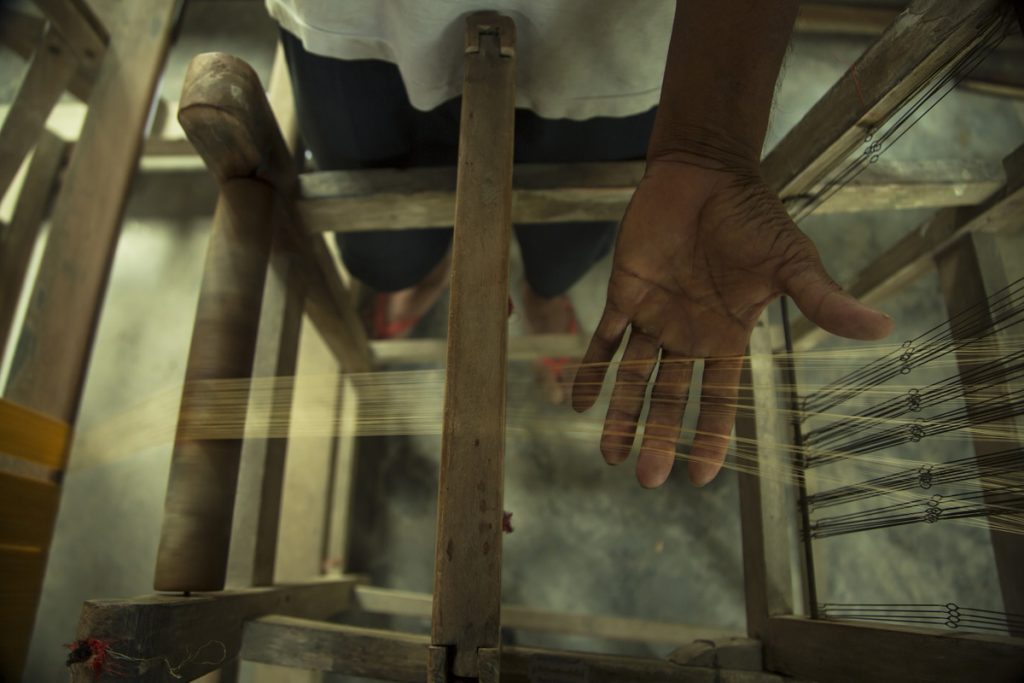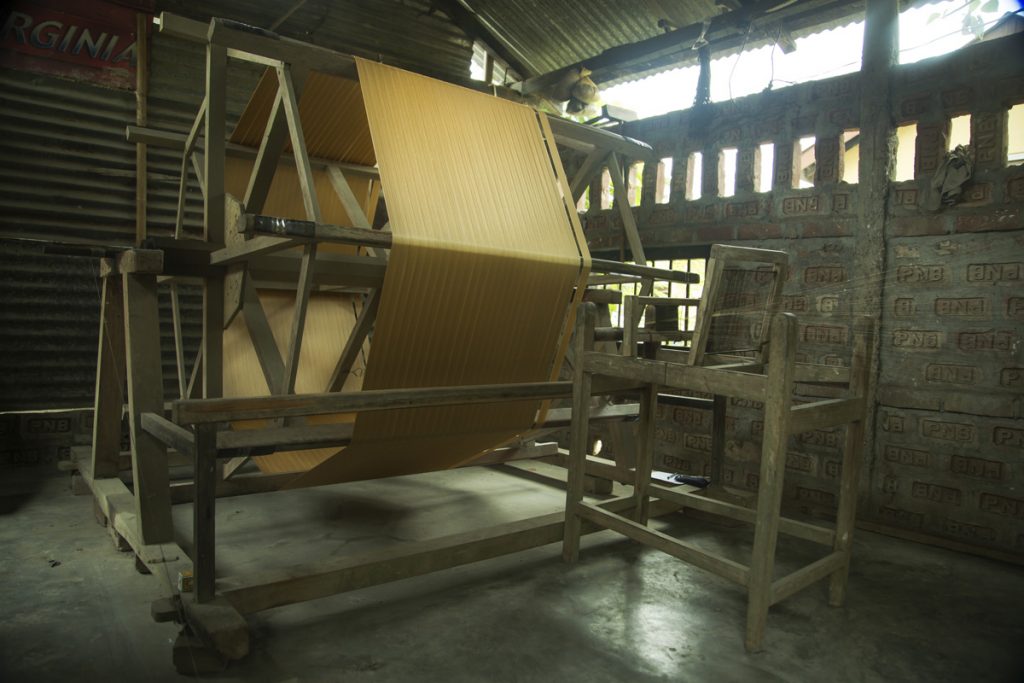Project by : Manash Pratim Handique
Silk Making Process
Location: Sikkim
Silk is considered to be a symbol of royalty and luxury not only for its lustrous look and soft feel but because it possesses many excellent properties in itself.
Silk is popularly known as Resham in eastern and north India and in southern parts of India it is known as Pattu. Silk has a long history in India since the Indus Valley Civilization. As per the archaeological discoveries, Indians of that era either harvested silkworm cocoons or traded.
Point to be noted is that how the silk is made. For this we have to go to the mulberry trees where a tiny creature called Silkworm, feeds solely the leaves of Mulberry trees.
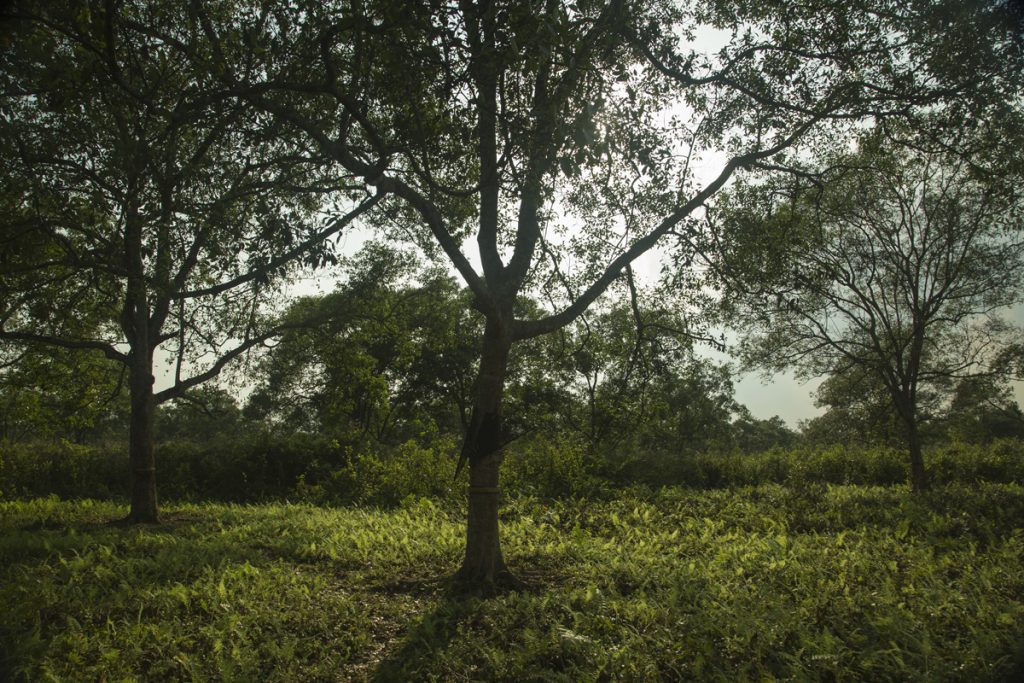
Before knowing the production of the silk you need to know the life cycle of the Silkworm. It begins with eggs. The larvae emerge from the eggs and feed on mulberry leaves. After about 35 days the caterpillars are 10,000 times heavier and are ready to spin a protective cocoon around itself to be transformed into a Chrysalis. The chrysalis breaks through the cocoon and emerges as a moth. The moths mate and the female lays 300 to 400 eggs. A few days after emerging from the cocoon, the moths die and the life cycle continues.
Now the time is to know of the silk production. The cultivation of silkworms for the purpose of producing silk is called sericulture. Sericulture involves raising healthy eggs through the chrysalis stage when the worm is encased in its silky cocoon. The chrysalis inside is destroyed before it can break out of the cocoon so that the precious silk filament remains intact. The healthiest moths are selected for breeding, and they are allowed to reach maturity, mate, and produce more eggs.
India is not only the second largest producer of silk in the world but also the largest consumer of silk in the world. About 97% of the raw silk comes from five Indian states-
• Andhra Pradesh
• Karnataka
• Jammu and Kashmir
• Tamil Nadu
• West Bengal
Apart from the large scale enterprises silk is a hereditary business in many parts of India specially in Sikkim where the finest quality silk is produced by the locals. As per few researches, out of the 370 families those have taken up mulberry plantations in their own land, they are continuing silk production as their part time work.
The photos with this post are originally clicked by IIPian Manash Pratim Handique in their own home town in Sikkim when he was on research for IIP. He has been nurtured and grown up in Silk so the authenticity of this project is proved in itself.
Wearing silk sarees in any auspicious days or function, specially in marriages had been a custom in each parts of India.
So next time if you choose silk as your loving attire then adore its excellent properties and the lengthy process of making silk.


